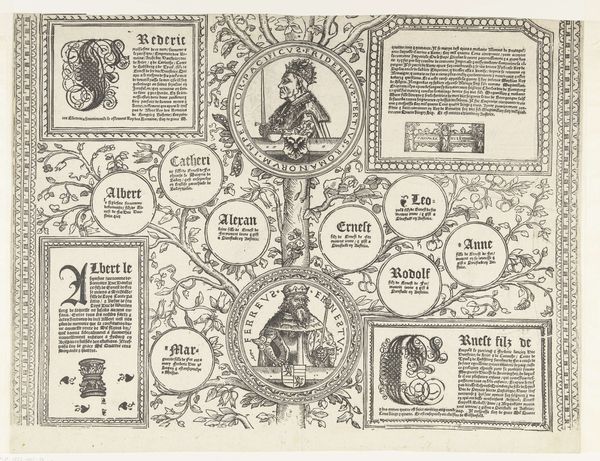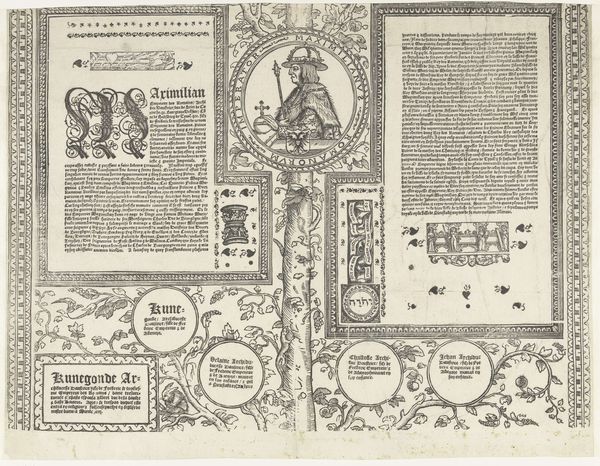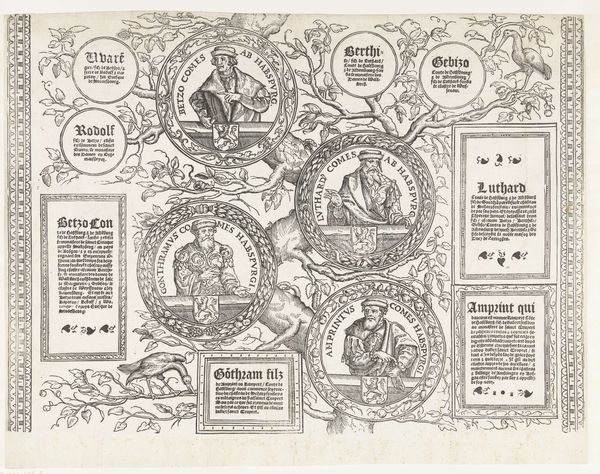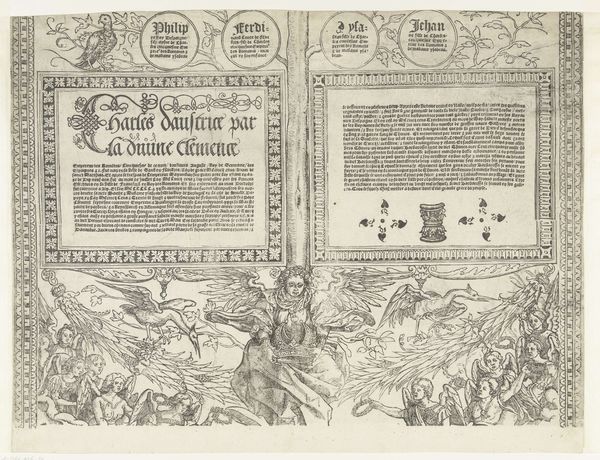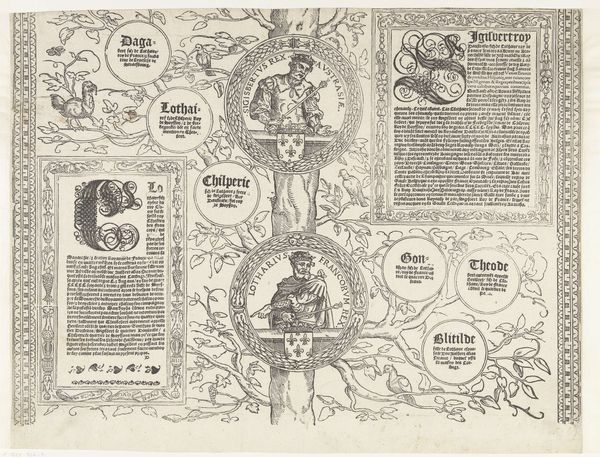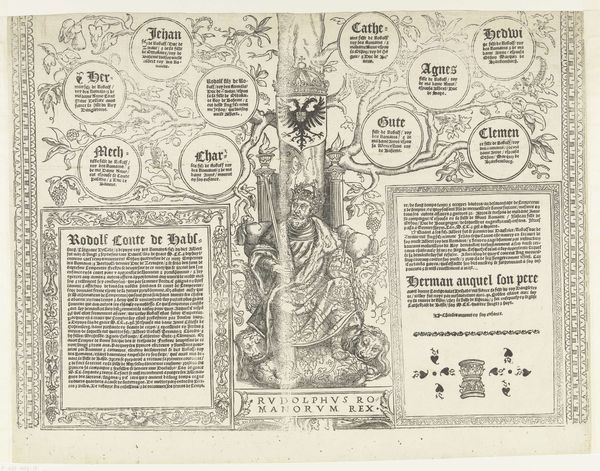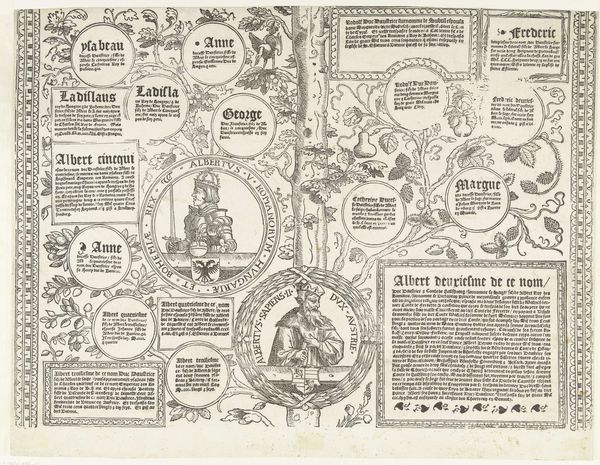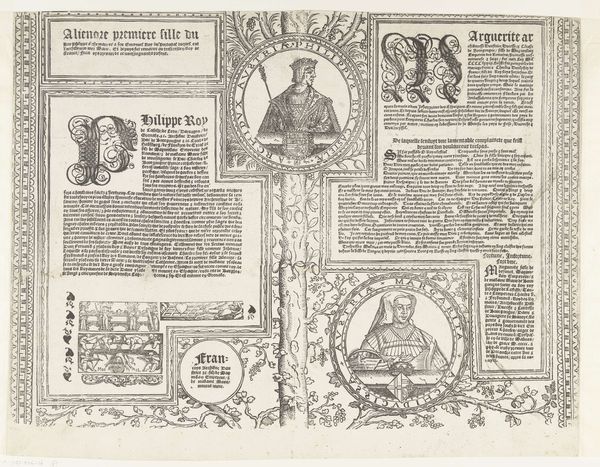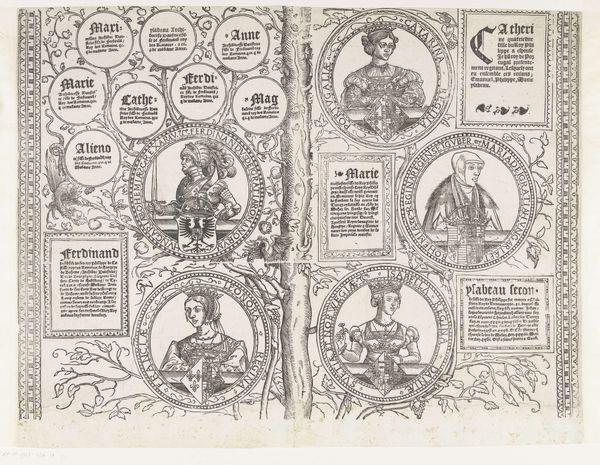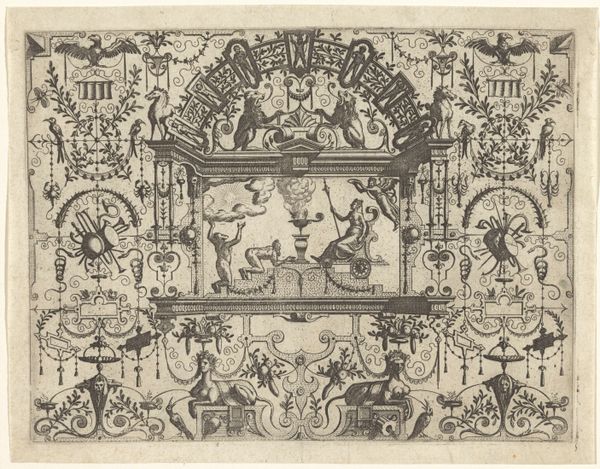
drawing, print, woodcut, engraving
#
portrait
#
drawing
#
medieval
# print
#
old engraving style
#
ink line art
#
geometric
#
woodcut
#
line
#
pen work
#
history-painting
#
engraving
#
intricate and detailed
Dimensions: height 371 mm, width 480 mm
Copyright: Rijks Museum: Open Domain
Curator: Look at this intriguing print titled "Stamboom van het Habsburgse huis, blad negen," or "Family Tree of the House of Habsburg, Sheet Nine," dating from 1533-1535. It's an engraving and woodcut—a combination that allows for remarkable detail. Editor: It certainly does seem incredibly intricate! The sheer amount of text alongside the circular portraits is a bit overwhelming at first glance, creating an almost claustrophobic visual experience. Curator: Well, that's partially the point. Lineage and power are being explicitly demonstrated. Consider that these family trees were more than just records; they were political tools meant to legitimize power. The "tree" form itself is strategic –visualizing hierarchy while also presenting roots and continuity. Editor: I agree, but even the language employed in describing relatives, such as labeling Albert as "le Riche", really shows how the Habsburg's chose to not only solidify familial dominance but characterize its key members to better situate each individual inside the dynasty. Curator: Exactly. What is fascinating here is the convergence of art and statecraft, illustrating a distinct image of authority via precise design and representation. We must ask ourselves: how did the careful curation of imagery contribute to broader societal narratives of race, identity, and class within Habsburg territories? Editor: Indeed. When assessing visual narratives, particularly involving European monarchies and aristocratic establishments, one finds deeply ingrained concerns related to bloodlines, cultural legacy, social advantage, and the sustaining power structures. And this particular visualization leaves little to be left unsaid about the means necessary to preserve a ruling dynasty. Curator: By showing these linkages explicitly, they were creating a powerful message about their entitlement to govern. It's all carefully designed to create this persona of legitimacy and grandeur that directly bolstered their claim to territory. Editor: This exercise of art as propaganda allows me to think more critically about the present day and how imagery remains an asset that political bodies consciously capitalize on when advancing personal agendas, leaving me feeling informed, but slightly cynical. Curator: Ultimately, the artwork offers invaluable insight into how the Habsburgs saw themselves and how they wished to be perceived, solidifying their place in European history.
Comments
No comments
Be the first to comment and join the conversation on the ultimate creative platform.
